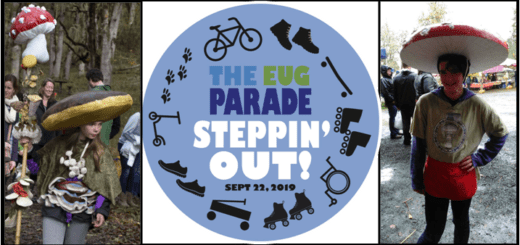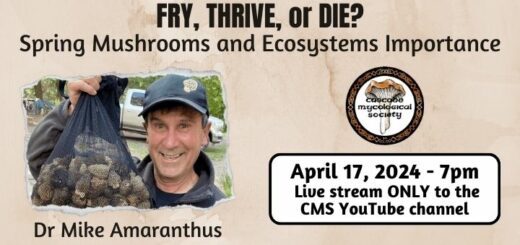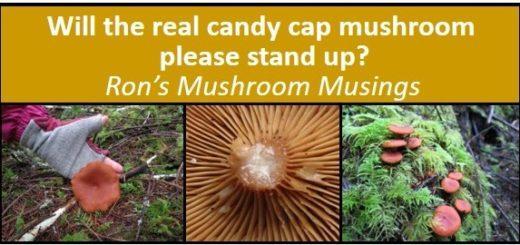Winter Mushrooms and Home Cultivation

January and February are not known for their abundance of wild mushroom choices, but there are still some out there. Discounting our snow covered Cascade Range and other frozen areas; we still have the Willamette valley and our beloved coastal areas to explore.
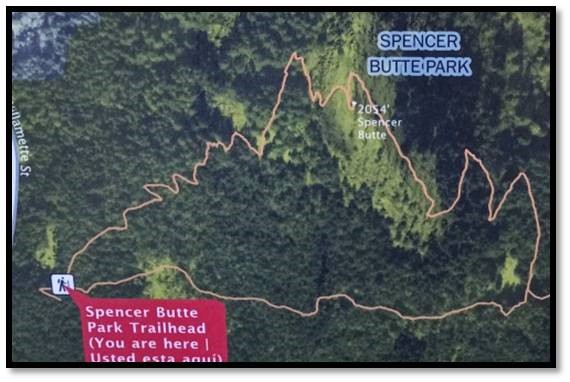
Recently, Sandy and I went on a quest to see if we could find mushrooms on Eugene’s tallest landmark, Spencer Butte. If you’ve never been to Spencer Butte, it’s Eugene’s local mini mountain with an elevation of 2,058 feet. From its base, you have the choice of taking a difficult trail or a more moderate trail to the top. The difficult trail does require a little free-style rock navigation near the top. The moderate trail has well defined paths and lots of steps to assist you on your way up. If you’ve been neglecting your cardio fitness, take the moderate trail, otherwise travel with a portable defibrillator and try and team up with a cardiologist.

Either way, you will be encountering a 784 foot elevation gain on your hike to the top. Unlike climbing Mount Everest, you won’t receive a medal for conquering Spencer Butte’s summit but you will be rewarded with spectacular views. Looking east on a clear winter’s day, you can see the snow capped Three Sisters mountains as well as Mount Jefferson. It’s also a good vantage point for surveying the valley area for possible new mushroom hunting spots.
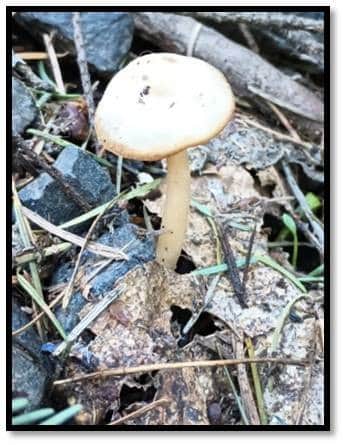
As for our success at finding mushrooms during our exploratory trip, well it wasn’t anything to write home about. Although, I will write about it for this article as something is better than nothing. We actually found nothing hiking up the difficult trail as we were more concerned about our personal welfare than looking around for mushrooms. We did have some minor success going down the moderate trail. The mushrooms that Sandy found were a little on the old side and we thought they might be a species in the genus Hygrophorus (a waxy cap mushroom). As there were very few mushrooms in the proximity of the moderate trail, we didn’t have the heart to pick one just for the sake of curiosity. The last time we hiked to the top of Spencer Butte was 8-years ago. During that early spring hike Sandy found a single morel mushroom just off the moderate trail near the top. We also let that charismatic looking mushroom finish living out its solo existence on the hillside. Unless of course someone far less benevolent than us saw it later and just couldn’t resist the urge to pick it. I like to believe it lived a long full life, going completely unnoticed by other hikers who were totally distracted by their mobile phones.
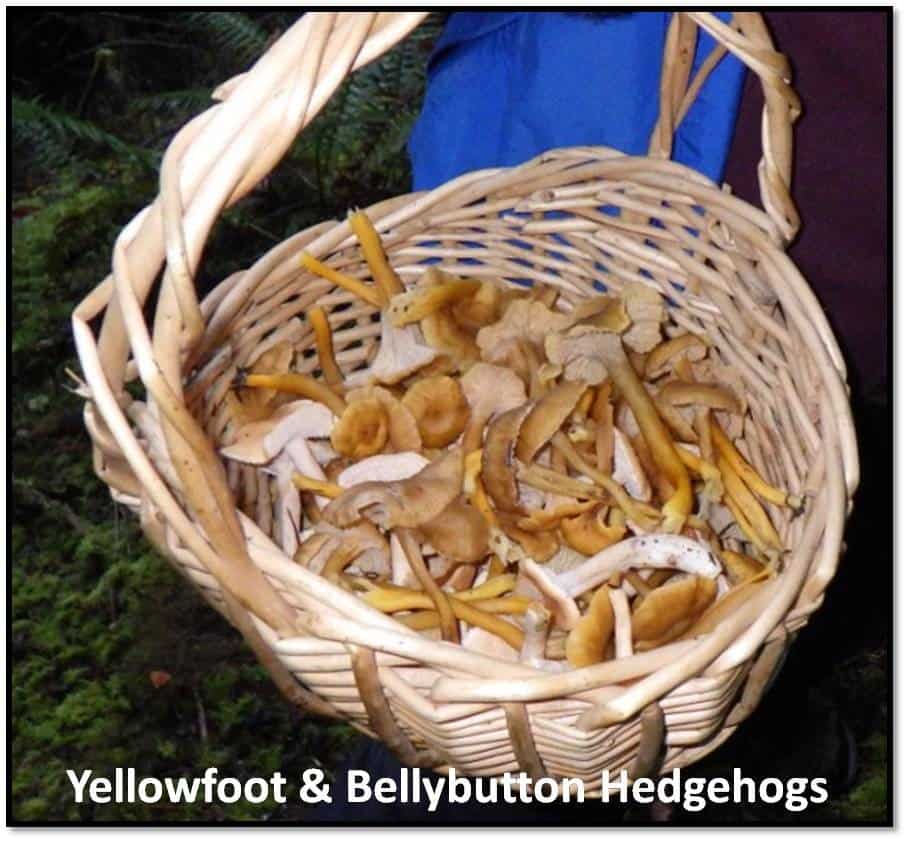
As for finding winter mushrooms without having to ascend a 784 foot trail, you still have plenty of easier options to choose from. Winter is the time to look for Yellowfoot (Craterellus tubaeformis), also referred to as our Winter Chanterelle, and what we commonly call the Bellybutton Hedgehog (Hydnum umbilicatum). On some websites, you will see our smallish winter hedgehog referred to as the “Depressed Hedgehog”. Please, give me a break! The use of the adjective “depressed” implies that our cute little toothed mushroom exists in a constant state of unhappiness and mental despair. The species name umbilicatum is derived from the Latin word “umbil?c?tus”, which roughly translates to “depressed like a navel”, or “having a navel-like depression”. The word “navel” is obviously the key word in this Latin translation. And, as we all know, our navel is commonly referred to as a bellybutton. I’ve never heard anyone talk about a person’s navel by saying “you have a really cute depression” or “you have some lint stuck in your depression”. Not gonna happen! We call it a navel or more commonly, a bellybutton. Well, I think I’ve made my point so I’m moving on.
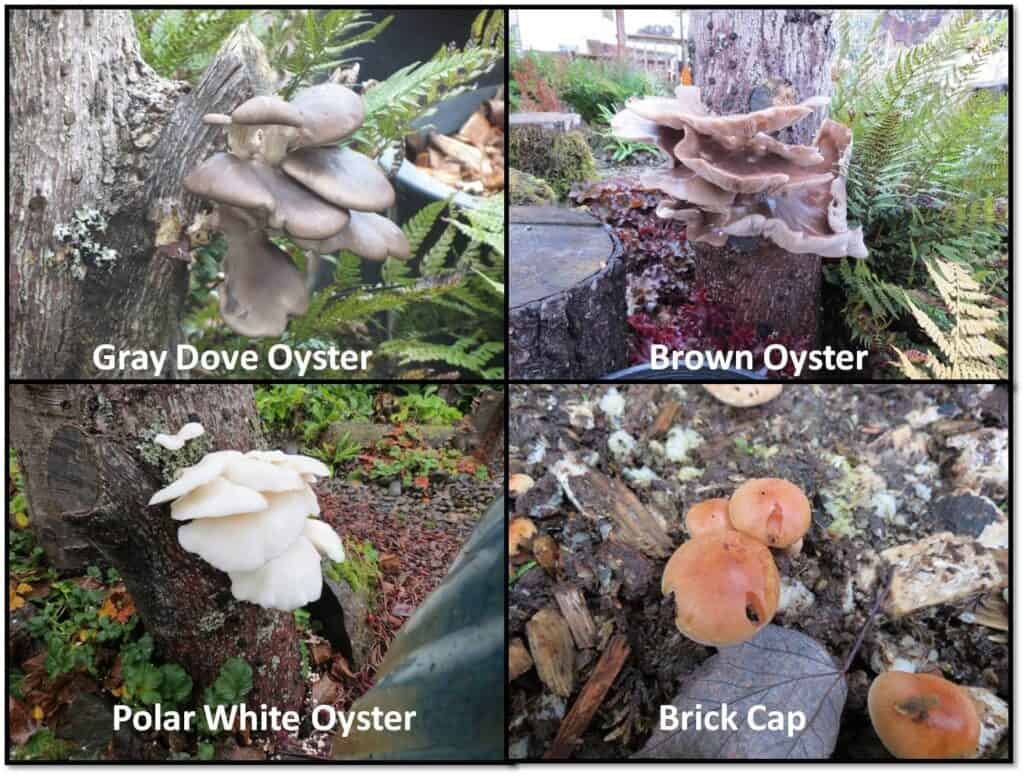
If you want to increase your variety of winter mushrooms, look no further than your own backyard. We’ve been doing log, nursery pot, and garden bed mushroom cultivation for quite a few years with very good success. You can easily obtain various strains of fungal species adapted to fruiting during a particular time of year. This way you can have something fruiting during each of our four seasons. You simply need to pair the mushroom species you want to cultivate with a compatible substrate. Some species are quite adaptable to various organic materials while others are very particular. Oyster mushrooms (genus Pleurotus) can breakdown a wide range of wood types as shown by Field & Forest’s compatibility chart. You can also cultivate Oyster mushrooms on straw bales or in nursery pots. Brick cap (Hypholoma sublateritium) can be cultivated using oak logs, nursery pots and in garden beds as long as you’ve used oak or mixed hardwood chips & some oak sawdust.
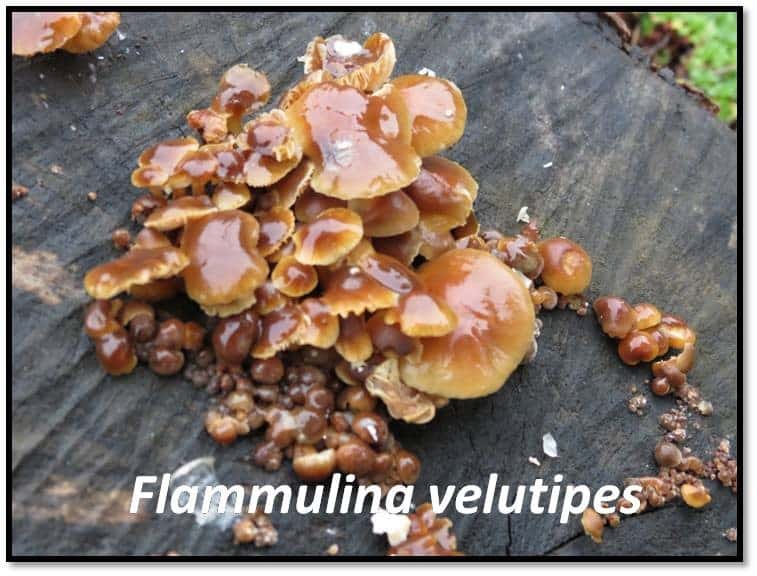
If you want to do wood inoculation, winter is the most advantageous time to harvest your logs. During the dormant season, trees contain larger amounts of carbohydrates in the form of starch and sugars to help them survive the winter. Winter wood harvesting insures a hefty amount of available food for hungry fungi. However, these extra stored carbohydrates will be utilized by trees in the spring to facilitate new growth. After obtaining your logs, you don’t want to wait too long to inoculate your wood as other opportunistic fungi also want a piece of the action. If you need to wait a few weeks, keep your fresh logs covered to retain as much moisture in them as possible. Just don’t be surprised if a mushroom besides the one you inoculated a log with also pops up. It’s just nature doing its thing. Ron Hamill identified this intruder as Flammulina velutipes or more commonly called velvet foot and Enoki when sold in grocery stores.
This uninvited but edible mushroom is fruiting on a large wooden Tulip Poplar stump we obtained from our neighbor’s yard. It had been inoculated with oyster mushroom dowels in 2023. Besides Oyster mushrooms, Shiitake is also one of the easiest mushrooms to cultivate on hardwood. The entire cultivation process is easy, fun and you will be rewarded with tasty mushrooms. What could be better?
By the way, if you’re interested in learning a little more about the owners of Field and Forest, watch this interesting short video created for PBS Wisconsin. Now get out there and try your hand at finding some Yellowfoot and very aptly named Bellybutton Hedgehogs.
Ron

